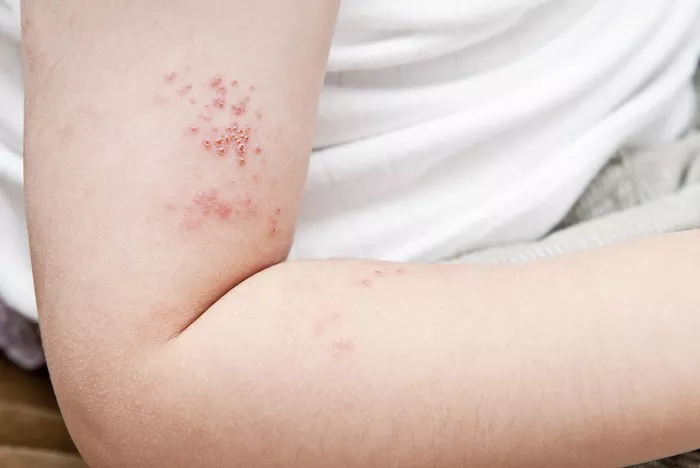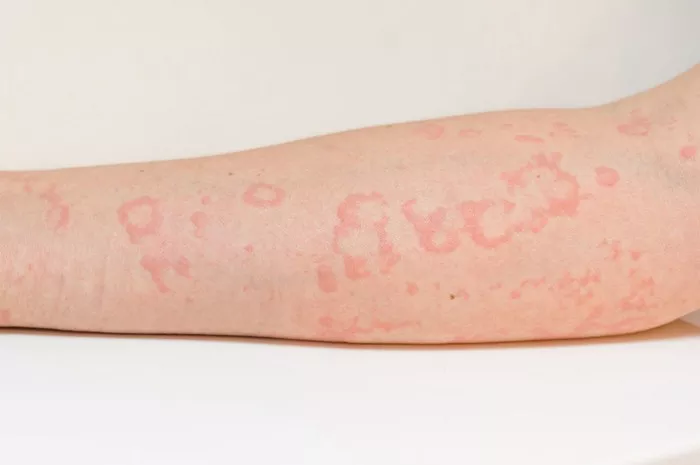Shingles, also known as herpes zoster, is a viral infection that stems from the varicella-zoster virus—the same virus responsible for chickenpox. If you had chickenpox in the past, the virus remains dormant in your nerve tissue, and later in life, it can reactivate as shingles. Shingles can be painful and uncomfortable, but it is more common in older adults and individuals with weakened immune systems.
In this article, we will discuss in detail where shingles can affect the body, how it spreads, and the symptoms that accompany it.
Understanding Shingles: The Basics
Shingles appears as a painful rash that typically develops on one side of the body. The rash usually manifests in a stripe-like pattern, reflecting the path of a specific nerve. This condition happens because the virus reactivates in the nerve tissue, causing inflammation along that nerve pathway.
Common Areas Affected by Shingles
Shingles can develop on different parts of the body, but the most common areas are:
- The Torso (Chest and Back)
- The Face
- The Eyes (Ophthalmic Shingles)
- The Neck and Shoulders
- The Lower Body
- Less Common Areas
Let’s take a deeper look at each of these regions and how shingles manifests in these areas.
SEE ALSO: Is Shingles Infection Contagious?
1. The Torso (Chest and Back)
Shingles most commonly affects the torso, especially the chest and back. In this region, the rash tends to follow the path of the nerves that come from the spine. The rash can appear as a band on one side of the chest or back, covering the ribs and wrapping around the body.
This distribution is a telltale sign of shingles because it follows the path of nerves affected by the virus. The rash is usually red, blistered, and extremely painful.
Symptoms on the torso: The pain in the chest or back can feel like burning, tingling, or sharp shooting pain. Many people initially mistake it for other conditions like heart problems or lung issues, but the emergence of the rash confirms shingles.
2. The Face
Shingles can also affect the face, and when it does, it can be especially serious. The virus can impact the nerves in the face, leading to a painful rash on one side of the face, forehead, or scalp.
When shingles affects the face, it can cause:
Facial nerve pain: Sharp, burning pain that usually affects one side of the face.
Blisters and rash: The blisters can appear on the forehead, around the eyes, or on the scalp.
Difficulty moving facial muscles: If the virus affects the facial nerve deeply, it can lead to temporary muscle weakness, making it hard to move facial muscles on the affected side. This condition is similar to Bell’s palsy but is caused by shingles.
3. The Eyes (Ophthalmic Shingles)
Shingles can affect the eye when the virus travels along the ophthalmic branch of the trigeminal nerve. This form of shingles is known as ophthalmic shingles and requires immediate medical attention due to the risk of vision loss.
Symptoms in the eye: The rash can spread to the forehead, upper eyelid, and even the tip of the nose. If left untreated, it can lead to complications such as corneal ulcers, scarring, and vision impairment.
Eye pain and sensitivity: Those with ophthalmic shingles may experience extreme sensitivity to light, eye pain, and blurred vision.
Possible complications: In severe cases, untreated shingles in the eye can lead to permanent damage, including blindness.
4. The Neck and Shoulders
Although less common than the torso and face, shingles can also appear on the neck and shoulders. In this area, the virus targets the nerves that run through the upper spine and neck.
Painful rash: The rash may appear as a red, blistering band that wraps around the side of the neck or down toward the shoulder.
Muscle pain: In addition to the rash, some people report muscle pain or stiffness in the neck and shoulder area.
5. The Lower Body
Shingles can also manifest on the lower body, including the hips, lower back, legs, or even the genital area.
Rash on the lower back or hips: This can follow the path of the sciatic nerve, leading to pain and blistering in a stripe-like pattern along the hip, buttock, or lower back.
Legs: If the virus affects the nerves in the legs, it can cause a painful rash that runs down the length of one leg.
Genital area: Shingles in the genital region can be particularly painful and may cause discomfort during urination or sexual activity. This type of shingles is sometimes mistaken for other infections, so proper diagnosis is important.
6. Less Common Areas
While it is rare, shingles can affect other parts of the body, such as:
The hands and arms: If the virus reactivates in nerves that run through the arms, it can lead to pain and rash in the hands or arms.
The scalp: Shingles on the scalp can cause pain when brushing or washing the hair and may lead to hair loss in some cases.
How Shingles Spreads on the Body
Shingles is caused by the reactivation of the varicella-zoster virus that resides in nerve tissue. When the virus becomes active again, it travels along the nerve fibers to the skin, causing the characteristic rash and pain. The virus does not spread to different parts of the body in a contagious way. Instead, the infection is localized to the area supplied by the affected nerve.
Symptoms of Shingles Beyond the Rash
While the rash is the most visible symptom, shingles is often associated with other symptoms such as:
Pain: The pain associated with shingles is often severe and can precede the rash by a few days. It is typically described as burning or stabbing pain.
Itching or tingling: Before the rash appears, many people feel itching, tingling, or burning in the affected area.
Blisters: Once the rash appears, it develops into clusters of fluid-filled blisters. These blisters eventually burst and crust over before healing.
Fever and fatigue: Some individuals may experience flu-like symptoms such as fever, chills, headache, or fatigue.
Risk Factors for Developing Shingles
Shingles can affect anyone who has had chickenpox, but certain factors increase the risk:
Age: Shingles is more common in older adults, especially those over 50.
Weakened immune system: Individuals with a weakened immune system due to conditions such as HIV, cancer, or long-term steroid use are at higher risk of developing shingles.
Stress: High levels of stress can weaken the immune system, increasing the likelihood of shingles.
Complications from Shingles
While most people recover from shingles without complications, there are risks associated with the infection, especially if it affects sensitive areas like the face or eyes.
Postherpetic neuralgia (PHN): This condition occurs when the pain from shingles persists long after the rash has healed. PHN is more common in older adults and can be debilitating.
Vision problems: If shingles affects the eye, it can lead to severe complications, including blindness if not treated.
Hearing problems or balance issues: Shingles in or around the ear can cause hearing loss or problems with balance.
Preventing Shingles
The best way to reduce the risk of shingles is through vaccination. The shingles vaccine, recommended for adults over 50, can reduce the risk of developing shingles and lower the likelihood of complications like postherpetic neuralgia.
Conclusion
Shingles can affect various parts of the body, including the torso, face, eyes, neck, shoulders, and lower body. The symptoms are primarily localized to the areas supplied by the affected nerve, and the rash follows a characteristic stripe-like pattern. While shingles itself is not contagious, the virus can cause chickenpox in individuals who have never had the disease. The pain, itching, and blisters associated with shingles can be severe, and the risk of complications increases in older adults and those with weakened immune systems. Understanding where shingles can occur and the symptoms associated with it can help individuals seek prompt treatment and prevent complications.
If you suspect you have shingles or are at risk, consult a healthcare provider for advice on vaccination and treatment options.
Related topics:

























